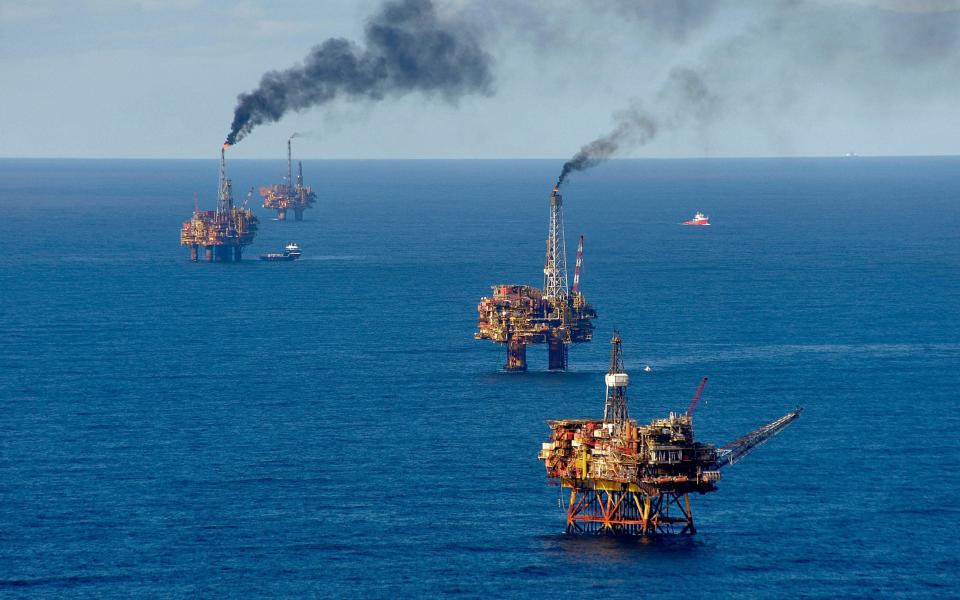North Sea oil rigs threatened with shutdown unless they start running on green electricity

North Sea energy companies could be forced to close oil and gas fields or be prevented from opening new rigs unless they slash emissions.
Currently, more than 280 platforms extracting oil and gas from UK waters produce 3pc of the country’s total emissions, the equivalent of about 17 million tonnes of CO2 a year.
However, UK oil and gas fields also account for half of the country’s energy needs.
Despite this, the North Sea Transition Authority (NSTA), which regulates the offshore sector, has told producers that they must convert platforms to run on green electricity or low-carbon fuels.
This means all new developments before 2030 must be designed to run on electricity, while all those after that must be fully electrified from the start.
Critics say the new demands will deliver a fatal blow to many of the older platforms operating around British shores.
Some date back to the 1970s or 1980s and would be hugely expensive to decarbonise.
For many, it would mean running power cables from the shore or building a wind farm close to each platform.
Stuart Payne, NSTA chief executive, said closing some low-producing, high-polluting installations earlier could be necessary to allow higher-producing and cleaner new assets to come online.
He said: “Energy production, reducing emissions and accelerating the energy transition are at the heart of everything we do.”
A key element of the NSTA plan is to put an end to flaring where offshore operators burn off or vent methane gas.
It follows revelations in The Telegraph last December that UK offshore operators flared a total of 651 million cubic metres of methane gas in 2022, according to NSTA data.
Flaring is regarded as unacceptable because it releases CO2 and unburned methane. Both are greenhouse gases but methane is about 80 times more potent than CO2.
UK policy aims to phase out the practice.
French-owned TotalEnergies burned 81 million cubic metres of gas in 2022, while Abu Dhabi-based Taqa burned 67 million.
The China National Offshore Oil Corporation (CNOOC), which operates the giant Buzzard oil field and three others, flared another 65 million cubic metres.
The NSTA said all flaring must end by 2030: “While progress has been made, with industry flaring volumes having decreased by around 50pc since 2018, and some flaring is unavoidable for safety and operational reasons, the NSTA has been clear that more must be done to prevent the wasteful flaring of gas and expects the reductions to continue.”
It added: “This plan places electrification and low carbon power at the heart of emissions reduction.
“It makes it clear that where the NSTA considers electrification reasonable, but it has not been done, there should be no expectation that the NSTA will approve field development plans that give access to future hydrocarbon resources in that asset,” it said.
The NSTA said it would “apply the plan in a reasonable manner” and try to avoid unintended consequences.
Mark Wilson, operations director of Offshore Energies UK, said: “The UK offshore energy sector is committed to meeting the decarbonisation targets and has made great progress already by reducing emissions 24pc since 2018 with a 45pc reduction in methane from flaring and venting in the same time period. It recognises the importance of continued investment to deliver future decarbonisation.”

 Yahoo Finance
Yahoo Finance 